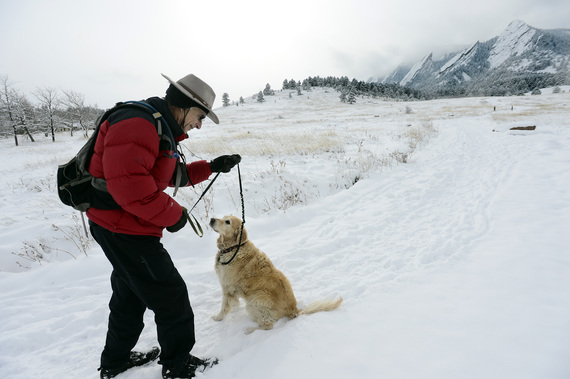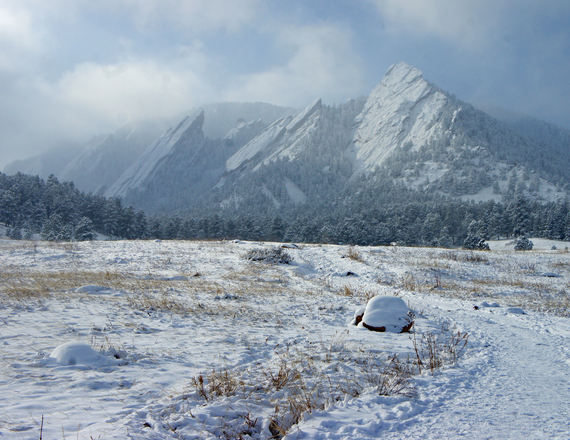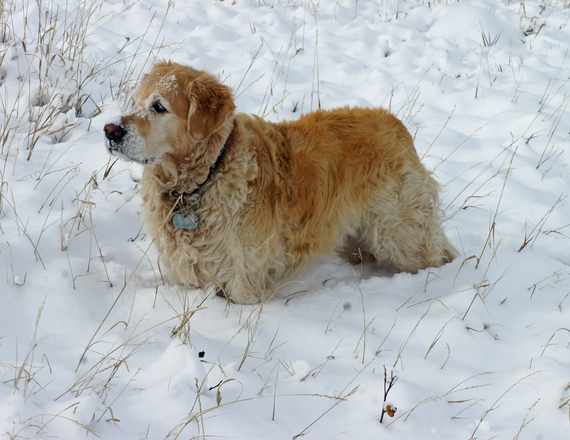It has been cold and snowy here in Boulder with temperatures dipping well below 0F/-18C for an entire week. Mandy the dog and I went out one frigid morning to photograph Boulder's Flatirons right after a storm when the snow is still billowing. I guess we were viewed as crazy by photographer Paul Aiken when he took this photo for the Boulder Daily Camera...
I managed to squeeze the shutter several times before my fingers and toes were starting to hurt so we turned around to head for warmth...
Mandy was disappointed when we started back to the car. She loves the snow and cold and could stay out all day...
After seeing our picture in the local newspaper article, several of my friends thought I was wrong to take Mandy out without boots on a cold snowy day. Have dogs become so domesticated that unlike their ancestor the wolf they now need boots?
Japanese researchers have recently uncovered the secret that protects dogs from getting cold when standing on frozen ground. Previous studies have found that dogs can stand on ground as cold as -31F/ -35C without the tissues in their feet freezing. This Japanese study entitled "Comparative Anatomy of the Vasculature of the Dog (Canis familiaris) and Domestic Cat (Felis catus) Paw Pad" is posted in the Open Journal of Veterinary Medicine.
In the dog's paw pad, the veins surround and run parallel to an artery. Both are in intimate contact so that when the arterial blood flows into the pad surface the venous blood flowing out is in close thermal contact. This establishes a constant temperature difference between arteries and veins and makes for an effective heat exchange. In cold temperatures the warm arterial blood transfers its heat to the adjacent cool venous blood. In this way body heat is re-circulated back to the body core through the venous blood prior to losing heat to the environment. If a foot pad is in a warm environment the blood in that pad will be warm and the heat exchanger will have little effect. When the foot pad is exposed to a cold environment heat loss is prevented by essentially shutting off the paw heater. This means that Mandy has evolved to maintain a warm body and to tolerate cold paws during exposure to cold. Indeed, Mandy's paws are supported by a circulatory heat exchange that evolved from wolves. This system is also found in penguins, arctic whales, seals and foxes. This discovery has the evolutionary implication that ancestors of the domestic dog lived in cold climates requiring such an adaptation. Sorry kitties but this adaptation does not apply to you. Perhaps your feline ancestors lived in warm climates.
Dogs deserve our envy, not our pity, in the cold. I wish my toes and fingers didn't hurt on a day like this...



